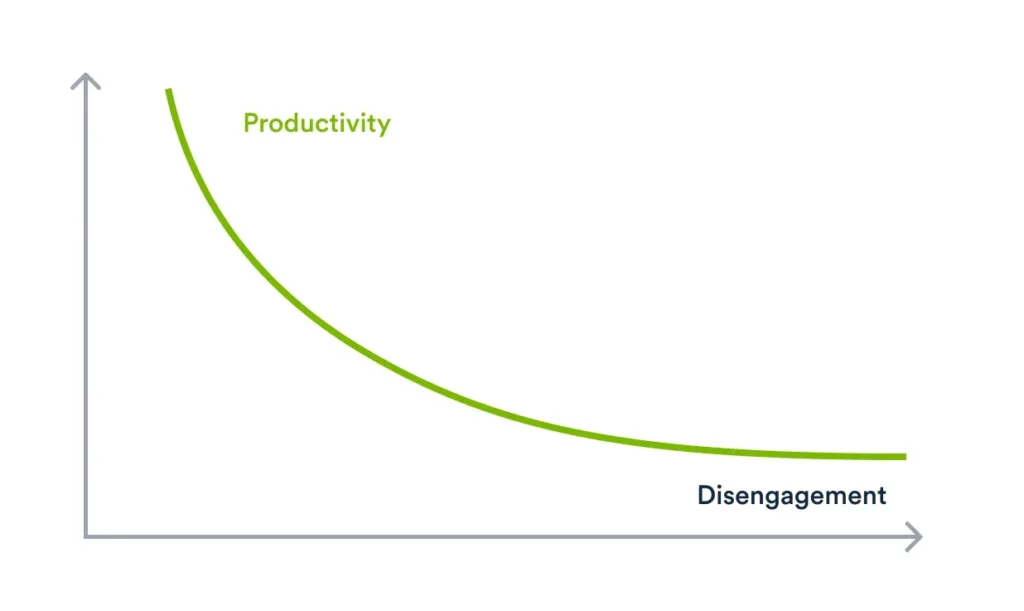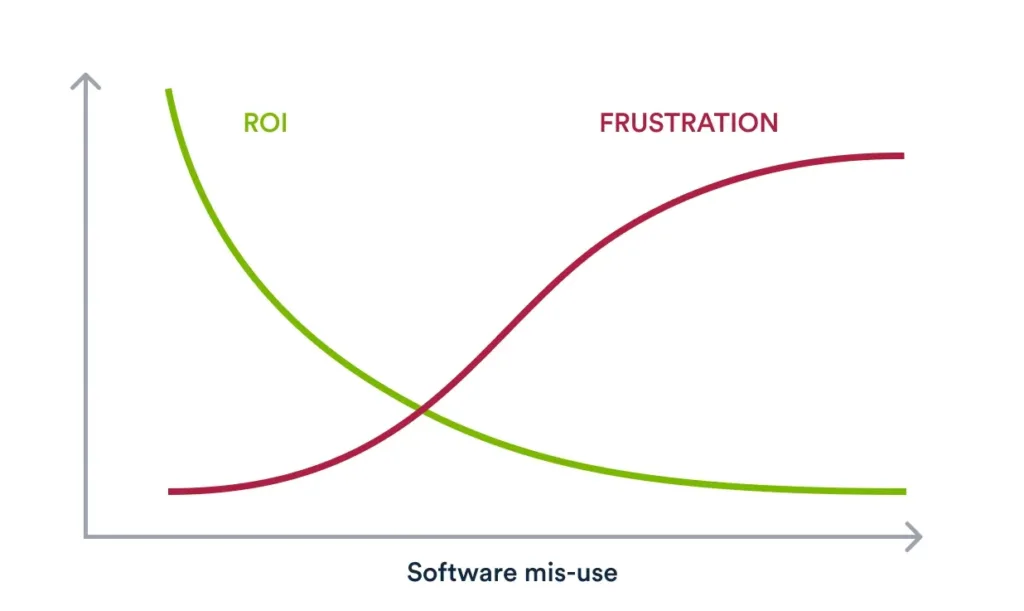Support tickets will cost your business – Here is why:

Software is eating the world as we know it. As the digital revolution propels us forward into the future, software applications that are used to manage processes across Sales, Marketing, Finance, Operations and Production have become the linchpin of business growth.
The use of software amongst employees is increasing at a rapid rate to complete tasks efficiently and effectively. Quite often, these applications are very complex and not intuitive to use. This creates a build-up of errors and delays that can run rampant on upcoming projects, forcing managers to give up more of their time to help employees make up for lost ground.
However, familiarising employees with software has become just as much of a challenge as a burden. For many HR and IT managers, the software onboarding process can sometimes feel like fitting a square peg into a round hole, since their employee training systems may not be compatible with either their schedule or work model.
This often results in users raising support tickets for lack of finding answers and self-service support – a process most likely to be accompanied by deep frustration and demotivation. This is damaging to any business as it can hamper productivity, bludgeon staff morale and create a disconnected workforce.
In this article we’ll explore the four reasons exactly why support tickets are costly to your business, along with the training methods you can implement to remove the need for support tickets altogether.
Table of Contents
4 ways a support ticket will cost your business
Support tickets are a common medium between software users and a support service. This method allows customers to connect with customer support teams to help solve the specific problem they’re having with a product or service.
According to research carried out by Super Office, the average response time to a support ticket is 12 hours and 10 minutes – with the slowest response time dragging out to eight days. This is a problem for big companies. Why?
Organizations, large and small, will almost certainly be working with a wide range of software applications . The more fragmented the landscape of tools and applications, the more likely it is that businesses will be entrapped in a carousel of support tickets.
When users do eventually get a response, the feedback received can be complex and difficult to implement. Dissecting and fixing these problems via digital feedback isn’t practical, and if nothing else, it can be painfully time-consuming.
Here are the costs of having to raise a support ticket.
#1 Users become disengaged with their work
Employee disengagement is the road to employee dissatisfaction. If staff can’t get on board with your software, then they’ll struggle to complete important tasks, making a number of errors along the way.
When this happens, there’s a good chance that their morale will wane, which will only make them further detached from their work.
A study from the G2 State of Software Happiness Report highlighted that 95% of employees
agreed that software can make them more productive, whilst 62% of them felt that they weren’t reaching their potential due to the software they were using at work.
To compound this even further, disengaged employees in the USA cost organizations approximately $450-550 billion each year (The Conference Board).

#2 Productivity takes a hit
A disengaged workforce is almost always an unproductive one. Employees are less likely to be motivated to complete important tasks or use their initiative to overcome obstacles they face. Recently, Gallup carried out a study which highlighted that disengaged staff have 37% higher absenteeism, 18% lower productivity and 15% lower profitability.
From a growth perspective this is incredibly redundant. Employees make up the engine of an organisation, for it is their efficiency that will determine its success. An unproductive workforce will directly inhibit a company’s ability to deliver projects on time, create friction amongst employees and fail to maximize revenue.
To put this into perspective, lost productivity costs American businesses up to $650 billion per year (Business News Daily).

#3 Errors in data processing increase
Not knowing how to use software correctly will lead to an accumulation of systemic procedural errors. No matter how big or small, persistent errors in data processing amongst employees is chronic, forcing other members of staff to invest additional time to identify where the error has occurred, and rectify the problem.
In monetary terms, for any large organization that has a 1% error rate, a business with 18,000 employees paying a salary of $25,000 a year may lose up to $4.5 million (Beqom).
#4 Staff will avoid using the software altogether
Software is expensive but if used effectively, the ROI can be tremendous. However, if employees don’t have the confidence to utilize it, then they’re likely to avoid using the software completely. The cost of unused software for businesses amounts to a colossal $40 billion a year, according to G2.

How can organizations avoid having to raise a support ticket?
At the heart of the problem is a disconnect between employees and the software. Staff need to be better trained to fully master the digital tools at their disposal, and to prevent themselves from being stuck in the first place. Doing so will avoid support tickets entirely.
A common approach that many managers turn to is online learning, delivering training in the form of courses, videos and webinars. As well as being time-efficient, employees are able to sit down and learn more about the software at their own pace. However, this type of user training material can be resource-intensive to create and manage, and is not easy to customize to different staff groups for instance.
Alternatively, managers can provide face-to-face training. Although this tends to be a more interactive approach, the logistical challenges and time required to train every member of staff individually makes it incredibly impractical. Given that many companies have now shifted more towards remote working due to the pandemic, face-to-face employee training may not even be an option at all.
With both models, managers will also have to endure the cumbersome process of constantly refining their training programmes to keep up with software updates. Neglecting this duty will make the training material obsolete very quickly, which means employees will be lost with out-of-date instructions when trying to use the software. Their last resort will be to raise a support ticket and patiently wait for an answer.
Digital Adoption Platforms (DAPs)
Offering a more modern approach are DAPs. To put it simply, DAPs are powerful software used to help employees learn the ins and outs of other software. They’re designed purely to make the software onboarding process as easy as possible. They’re efficient, they’re agile, but most importantly, they’re incredibly effective.
The DAP will layer itself on top of existing software, much like a cloak, and will then offer a more simplified way of using the software through interactive guidance, illustrations, insights and contextual help.
Digital Adoption Platforms are often viewed as the bridge that connects employees to digital tools, allowing businesses to make full use of all their software.
As well as boosting productivity, reducing errors and enhancing engagement, it will also prevent employees and users from having to raise support tickets. Employees will no longer fly blind with complex software, and managers will waste less time on software training.
Userlane is proud to be one of the fastest Digital Adoption Platforms on the market. So if you’d like to discover more about digital adoption platforms and how to use them in your business, then don’t hesitate to request a consultation with one of our specialists today.


